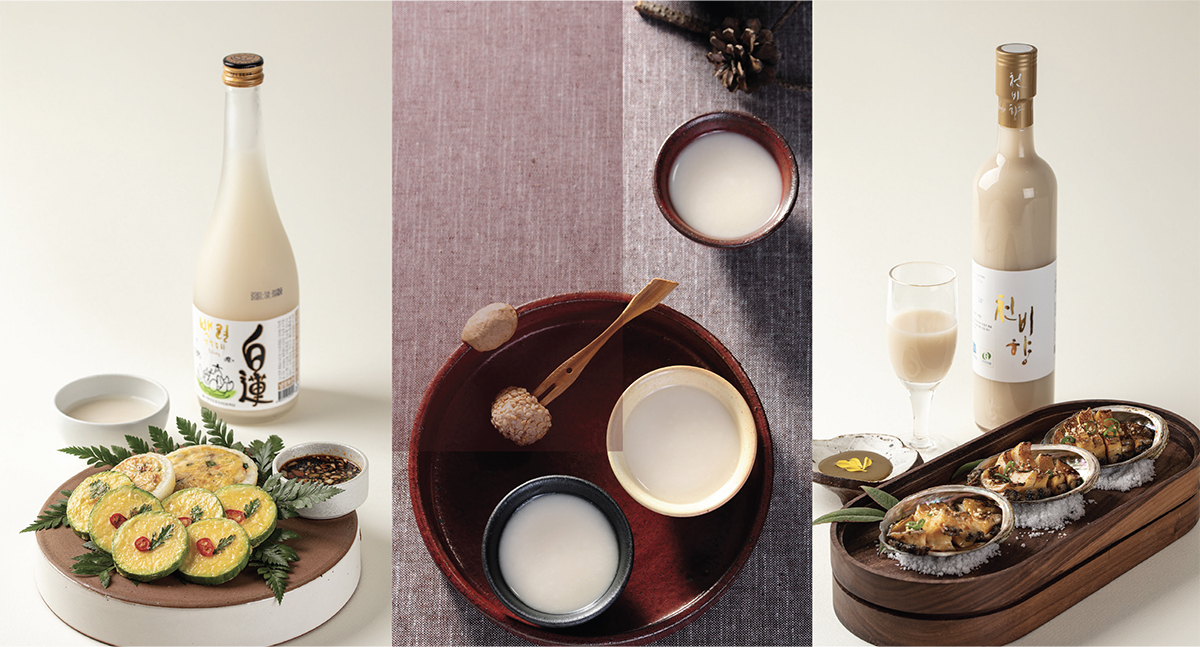
While various grains may contribute to their compositions, the majority of traditional Korean alcohols are produced through the fermentation of rice. It's the convergence of pure mountain water and Korean sources, seasonal ingredients, and different regional manufacturing methods that underpin this cultural heritage, rich with 5,000 years of history and tradition.
Liquors crafted from ancient recipes are called Jeontongju, or traditional alcohol. These alcohols inherit techniques and brewing expertise passed down through ancient times. Under the law aimed at preserving traditional alcohols, artisans preserving these cultural treasures are designated as “intangible cultural assets” or “Grand Masters of Korea”.

Korean traditional alcohol can take the form of Takju, an opaque alcohol made from grains like Makgeolli, a rice alcohol ranging between 6 and 10 degrees, effervescent and almost creamy. On the palate, its taste is delightfully mellow and more or less sweet depending on the rice used. We also find Yakju or Cheongju, clear golden liquor that separates from the sediment layer during fermentation or filtration, consumed as light alcoholic beverages during meals or as aperitifs. Also highly prized are distilled liquors like Soju, the most iconic spirit of Korea. It's estimated that 5.8 bottles of Soju are consumed per person per month in South Korea. The Hwayo brand holds the largest market share for distilled Soju. Unlike the diluted version, the distilled version uses only high-quality local rice and spring water. Its recipes generated over centuries give the drink its rich flavor. Finally, fruit wines fermented from local fruits. Wild berries, grapes, apples, peaches, and strawberries are used in the numerous varieties of Korean fruit wines. Among the most popular fruit wines is Bokbunja, a medicinal berry to which Koreans attribute energy gain.
Nowadays, wine production technology in Korea has significantly advanced, with winemakers trained in countries like France or Italy. They use unique Korean grape varieties or local products like omija to produce still and sparkling wines, as well as whiskies. A country to watch for the richness of its beverages.
Color: brilliant and water white with silver sheen.
Nose: high intensity with quiet bright aromatics of sweet, fermented rice, sweet spices like anise seed, fresh fennel, notes of banana and pear drop sweets, note of citrus zest.
Palate: fine purity and smoothness on the attack with volume and oiliness. Pleasantly warming presence of alcohol, well integrated, sweet sensation of rice, sweet spices like anise and fennel seed, with scents of sweet green pear, banana and touch of lemon zest adding sense of freshness. A pleasant and clean finish.
Comment: a fine example of Korean soju which could be perfectly enjoyed on ice as an aperitif or with oily and umami rich seafood dishes with rice, as an example Kabayaki eel.